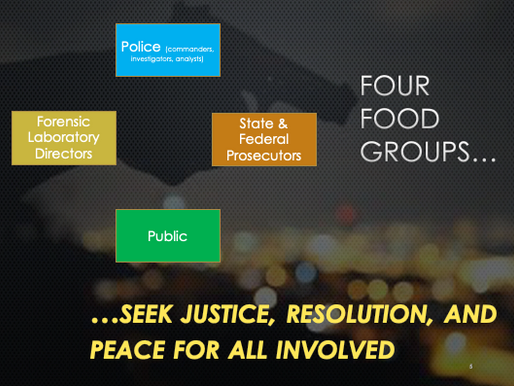I am a lineman for the county…
When Jimmy Webb wrote that line of the “Wichita Lineman” back in 1968, I don’t think he would have ever imagined that his song would not only go on to sell millions of records for Glen Campbell but be recorded by such notable singers as Johnny Cash, James Taylor, and Billy Joel. That song would be inducted into the National Recording Registry of the Library of Congress in March 2020. But what most people don’t know is that while Webb wrote that song specifically for Campbell – a ballad about an ordinary man thinking extraordinary thoughts – when he sent it over to Campbell it wasn’t finished. He didn’t have the last verse written, but the pressure to get something over to Campbell was immense. Weeks later, Webb needled Glen, “Well I guess Wichita Lineman didn’t make the cut.’ Glen surprisingly responded, ‘Oh yeah! We recorded that!’. Webb exclaimed that he didn’t think that song was finished. Glen responded, ‘Well it is now!”[1]
I can picture my childhood driving in my dad’s blue 1974 Grand Torino wagonmaster with the wood looking trim listening to the Wichita Lineman. Such a simple song about a guy who misses his girlfriend while working out on the lonely road. Yet, of late, after learning about the story behind the story of the creation of the Wichita Lineman, this song has now become sort of an intonation for me underscoring how emergence is underpinned by collaboration. Let me explain.
I hear you singing in the wire, I can hear you through the whine…
The New Jersey State Police (NJSP) has been at it for some time trying to perfect the way they conduct the practice of crime gun intelligence. In late 2013, the NJSP found itself, and me for that matter, in a difficult position. The Camden County Metro Police Department was clamoring for quicker turnarounds on NIBIN analysis related to their crime gun submissions. I was a new commander who among so many other priorities oversaw the Section for which NIBIN processing and analysis was performed. During this same time, then New Jersey Governor Chris Christie had passed legislation requiring law enforcement officers to ensure that crime guns were traced and entered into NIBIN within a reasonable time frame, which meant hours, not months as the state was used to. This legislation codified the requirements outlined in a previous 2008 Attorney General Directive. Meeting the challenge, the NJSP, informed by the critical steps of NIBIN outlined by the Bureau of Alcohol, Tobacco, and Firearms (ATF), both backlogs while increasing performance, and soon became a national model for how a state agency could develop and implement a robust NIBIN program.When I was tagged to address the quicker turnarounds related to NIBIN, I was fortunate enough to rely on a team of people both inside and outside my organization, from within the law enforcement community and from those experts that knew the business.It took us about 10 months, but we fixed the fundamental aspects of NIBIN – collection and turnaround – and law enforcement agencies across the state immediately began to see the difference because of the advancement of the Garden State Ballistics Community of Interest, which brought together the other 6 NIBIN processing labs across the state to address “timely turnaround.” For the NJSP, their NIBIN turnaround times astonishingly went from 6 to 10 months to 24 to 48 hours.And I drive the main road – Searchin’ in the sun for another overload…
As a typical commander, I was on to other issues. I kept an eye on things but since the crisis issue of “timely turnaround” was addressed I focused my attention to other issues in my Branch. Looking back, it should have been no surprise to me that others would take up the mantle to increase the larger statewide capabilities related to crime gun intelligence. Those that deeply understood the processing of trace evidence, DNA, and obliterated serial numbers weighed in to further enhance the crime gun processing protocol to help generate timely information needed to speed up and advance ongoing investigations. At the same time this was occurring in our Special Investigations Section, the state’s fusion center, “The Rock”, was refining their analytical and crime gun intelligence production to better inform investigators, and the larger law enforcement community regarding the state’s shooting environment. These processes had begun in 2007, when the fusion center was responding to the request of the then Governor Jon Corzine to understand the shooting environment in Camden. Yet at that time, the ballisticians, forensic techs, analysts, and investigators were not coming together to share information, and experiences, to further ensure that each crime gun recovered could tell its story through NIBIN, eTrace, and local intelligence. What was emerging from the collective capabilities among the Special Investigations Section, the fusion center, and the Ballistics Community of Interest would not just tell individual crime gun stories, but would provide investigators and commanders across the state an understanding of how each of the antagonists in those stories were linked to together and responsible for the violent mayhem across the state.
I know I need a small vacation, But it don’t look like rain…
Now looking back 9 years later, I see things through a different prism. Like Jimmy Webb, I handed over an unfinished product, never to expect the incredible results that followed. There is still work to do. Did you know that the last stretch, the last mile of delivery in supply chain management is the most difficult? Those challenges usual center around efficiency and performance. The NJSP, like many other law enforcement agencies that followed the ATF’s Minimum Required Operating Standards for NIBIN are abound in investigative leads, yet they struggle with how to triage and prioritize those leads. They find themselves at interesting cross-roads as to how best to ensure that investigative follow-up, prosecution, and feedback loops are an integral part of this incredible statewide capability they have been advancing. This last stretch must withstand the strain.
And if it snows that stretch down south, Won’t ever stand the strain…
In October 2021, I was fortunate to have been invited back to deliver a presentation to the many members of New Jersey’s crime gun intelligence community. Robert Troyer, former United States Attorney from the District of Colorado, and myself co presented Precision Awareness and Prosecution. We leveraged much of the former research and practical knowledge of Pete Gagliardi, Carlos Canino, George Belsky, and James Sheehan on the fundamentals surrounding the building blocks of investigating gun crime, leadership, and interagency collaboration. Unlike so many other law enforcement agencies who have adopted NIBIN, the New Jersey law enforcement community was now expanding that emergence theory by including prosecutors into the equation. Troyer, through Ultra Forensics Technology, had recently published the NIBIN Tool Kit for Prosecutors. He covered much of the content in that toolkit to brief this New Jersey audience. More importantly, for these law agencies charged with tackling gun crime who were navigating the gauntlet of investigative follow-up and prosecution, Troyer’s guide gave them hope in their journey.
And I need you more than want you,For New Jersey, the last hurdle continues to include investigative follow up and feedback. Interestingly enough, this is not the first time they have tried to tackle this difficulty. In 2018, the NJSP hosted The New Jersey Statewide NIBIN Hit Triage Protocol Workshop in which 30 commanders, investigators, forensic personnel from the NJSP, ATF, and counties participated. The working group conducted practical exercises that involved reviewing NIBIN hits for the purpose of understanding what elements should be considered when triaging and prioritizing leads. The working group gained consensus around using an index as a foundation for triaging and prioritizing NIBIN leads.
And I want you for all time
Like all crime gun intelligence programs, any improved collection and analysis of NIBIN, etrace, and local intelligence will inevitably generate more investigative leads than ever before. This is of course good news, but it is also bad news since law enforcement agencies can quickly drown in their own ocean of leads. While the triaging index from that 2018 workshop seemed at the time to be a useful tool, without technology to underpin the effort, it quickly became unsustainable.
Today, the NJSP has again decided to tackle this last stretch of follow-up and feedback through a blending of technology and people. Their CAP5 (Crime Analysis Precision Policing & Precision Prosecution Program) initiative powered by the BackTraceapplication is emerging as a unique effort to quickly collate, aggregate, and filter disparate data sets to support strategic, operational, and tactical missions. These efforts are identifying high frequency violent offenders involved with gun crime and revealing additional associations that can provide context in support of NIBIN leads. By weighting and scoring leads, the NJSP program will begin to develop a mechanism for triaging and prioritizing the copiousness number of leads that have resulted from a robust statewide comprehensive collection and timely turnaround capability.
Hard to believe that all of this innovation started some 15 years ago and has spanned many people. Each person contributing their ideas, experience, or technology. Just like Jimmy Webb, no one was afraid to push a half-baked idea. There is a running joke at “The Rock” that essentially says that they (the fusion center) embrace innovation by simply “building the plane as they fly it.” Maybe the last mile will always be there for the NJSP as they advance their capabilities related to crime gun intelligence. Nonetheless, one thing though is certain, their collaborative efforts to tinker, revise, and renew their capabilities have created an environment where innovation and emergence flourishes.
Billy Joel once said that the Wichita Lineman is a simple song about an ordinary man thinking extraordinary thoughts. For the NJSP, the crime gun intelligence journey leading up to the last mile they are facing is about ordinary people thinking, implementing, and sharing their extraordinary thoughts over 15 years to shape and strengthen an important capability designed to bring justice to victims, resolution to their families, and peace to the communities. They too have been Searchin’ in the sun for another overload.
I am a lineman for the county, And I drive the main roadShare













